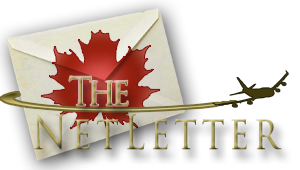|
Herb Seagrim, our Vice President of Operations, had laid down the party line to the rest of us – that we were not going to be rushed into a decision. However, if pushed, the preferred choice was the US-SST B2707, as it had the potential for superior economics despite a high initial cost. The Concorde would be considered only if it could be established that Air Canada could have competitive problems due to late delivery of the US product. Because of the forecast competitive situation (see table 1), and to pacify Mr. McGregor, the decision was made to place deposits on both types.
Herb Seagrim recommended to Gordon McGregor that the airline proceed to hold line positions for four Concordes and six US-SSTs. McGregor agreed, and our proposals for the supersonic program went before the Air Canada Board of Directors on September 27, 1966. A general overview was presented by Chief Engineer Jack Dyment, followed by Ian Macdonald from the engineering department who described the development of the supersonic airplanes, their physical characteristics and mission potential.
It is interesting that the majority of our supersonic operations were projected for North American routes.
As for 1974 when Air Canada would have four Concordes, only three of the seven long-haul flights would be overseas, increasing to just five of 12 by 1977. The fact that almost 60% of supersonic flying was to be continental would later become a major factor in the decision to exit the SST program.
In the summer of 1968, I was approached by BOAC in connection with its proposed Concorde operation from London to Tokyo via Frobisher Bay (Iqaluit) and Cold Bay in the Aleutians. The flight path would take the airplane over a substantial amount of northern Canada and BOAC was concerned as to whether or not the Canadian authorities would approve.
I prepared a document that was signed jointly by Yves Ménard, our Vice President of Marketing, and myself, Vice President, Operations Planning. After clearing it with Yves Pratte, chairman and CEO, we presented it to the board. There was little or no debate about withdrawal, perhaps even a little sigh of relief.
Fortunately, the decision didn’t cause any ripples. About 10 days later, Pratte was in Paris on other business and expecting plenty of flack from the French press. Beyond a minor reference, there was nothing noteworthy.
The storm came later when the major US operators announced their cancellations – which they all did.
One by one, the US and foreign airlines pulled out of the program, leaving only BOAC and Air France, which initially ordered nine Concordes between the two of them.
Editors' Note: 14 production Concordes were eventually built, 7 each for British Airways and Air France, in addition to 6 prototype and development aircraft.
|

